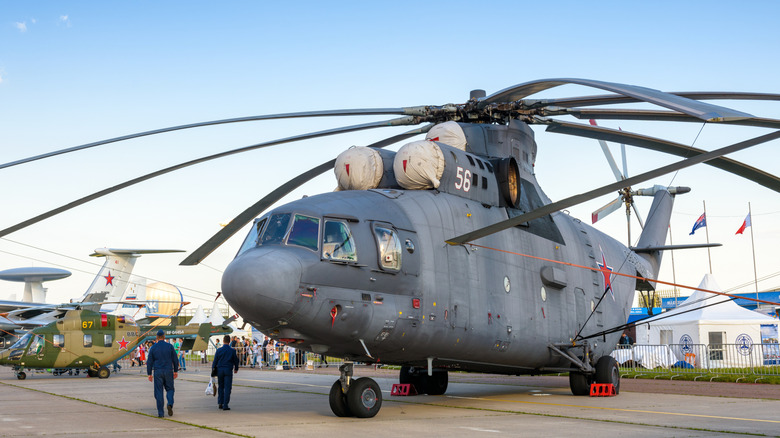A Legacy of Innovation in Aviation
The aviation world witnessed a groundbreaking moment in 1939 when the Sikorsky VS-300 made its first flight, marking the beginning of helicopter technology. This pioneering aircraft was the first to successfully demonstrate vertical takeoff and landing capabilities, revolutionizing aerial transportation. Over the decades, helicopters have evolved into highly advanced machines, equipped with powerful engines and sophisticated avionics. Today, they serve a wide array of industries, from military operations to civilian applications.
One of the most impressive examples of this evolution is the Mil Mi-26, which stands out for its extraordinary lifting capacity. With a maximum lift capability of 44,000 pounds, it is considered one of the most powerful heavy transport helicopters in the world. The key to its remarkable performance lies in its dual turboshaft Lotarev D-136 engines, each producing 11,094 shaft horsepower. These engines power an advanced rotor system that spans 104.98 feet and features eight blades made from a composite of aluminum and titanium. Together, these components allow the Mil Mi-26 to achieve a maximum takeoff weight of 123,458 pounds and operate over a range of nearly 500 miles.
Development and Design
The development of the Mil Mi-26 began in the Soviet Union during the 1970s. It was designed to replace the older Mil Mi-6 and the failed Mil V-12 concept as a military troop and equipment transport helicopter. The first prototype took to the skies on December 14, 1977, and it soon entered service with the Soviet military and commercial operators in 1983. Known by the NATO codename “Halo,” the Mil Mi-26 is not only one of the largest helicopters but also one of the most unique in appearance. It measures over 110 feet in length and 26.7 feet in height, with an interior cargo hold that is 10.49 feet wide, 10.33 feet high, and nearly 50 feet long.
Operational Capabilities
The Mil Mi-26 is crewed by five personnel and can be used as a troop transport, carrying up to 85 passengers. In medical evacuation missions, its interior can be reconfigured to accommodate 60 medical stretchers. Unlike many military helicopters, the Mil Mi-26 does not carry weapons. Instead, it is equipped with safety and threat countermeasures such as infrared jammers, self-sealing fuel tanks, decoys, flares, and engine infrared signature suppressors to protect against heat-seeking missiles.
Versatility in Use
The durability and versatility of the Mil Mi-26 have allowed it to operate in some of the harshest environments on Earth. It has been deployed in the Siberian sub-zero tundra, near the Swiss mountains, and even in the deserts of Afghanistan. Its adaptability is evident in its ability to transport a wide range of cargo, from oil and gas industry equipment to earth-moving machinery used during the 2008 Sichuan earthquake in China. Notably, it has even transported the frozen remains of an Ice Age woolly mammoth.
In addition to cargo transport, the Mil Mi-26 has been used in firefighting operations. One notable example is the S-70 Firehawk, a modified version of the Mil Mi-26 designed specifically for fire suppression.
Ongoing Production and Modernization
Originally developed and built by the Moscow Mil Helicopter Plant, over 300 units of the Mil Mi-26 have been produced, with ongoing manufacturing continuing today. The latest variant, the Mil Mi-26T2V, is being developed for the Russian military and includes several enhancements such as a multifunctional instrument display, improved avionics, night flying capability, and an advanced communications system.
Despite being nearly half a century old, the Mil Mi-26 continues to be a vital asset in both military and civilian operations. Its unique combination of power, versatility, and durability ensures its relevance in the ever-evolving world of aviation.






